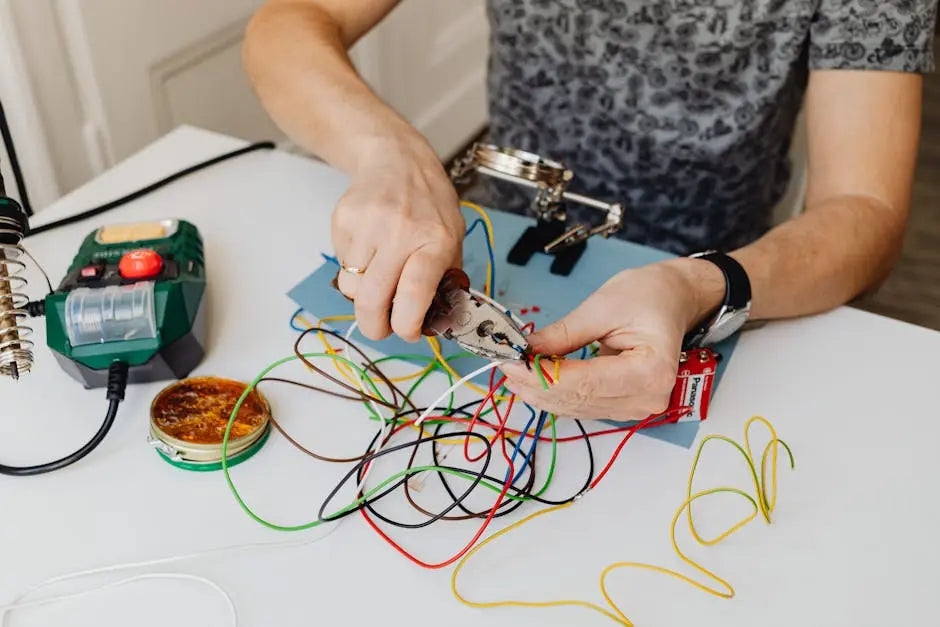
12 Common Mistakes with Butt Connectors and How to Avoid Them
Share
Butt connectors are invaluable for creating secure and reliable electrical connections, but even seasoned professionals can make mistakes when using them. In this blog, we’ll explore some common pitfalls and how you can avoid these errors to ensure your wiring projects are a success.
1. Choosing the Wrong Connector Size
Selecting the correct size of butt connector is crucial for a secure connection. Using a connector that’s too large or too small can lead to poor contact and potential electrical failures. Always check the wire gauge against the connector size to ensure a snug fit. Ensure the insulation fits well over the connector after crimping as even a slight mismatch in size can increase the risk of accidents and reduce electrical efficiency. For home projects or vehicles, a mismatch might mean loose connections, which can be particularly problematic in environments like automotive or marine where vibrations are common.
It’s not just about checking the wire gauge alone; consider the working environment! For example, if you’re working in a setting with constant vibration, such as a boat or car, any slight oversight can loosen connections quickly. It’s always beneficial to refer to an in-depth guide on crimping techniques to ensure that you are selecting the correct size and style of butt connector for your specific application. Investing in quality connectors from trusted brands can help in mitigating these issues, ensuring they are able to withstand diverse conditions without losing their grip.
2. Ignoring Wire Stripping Length
Properly stripping wires before insertion is essential. Too much bare wire can lead to short circuits, while too little exposure can prevent proper connection. Aim for the perfect balance to ensure a tight, reliable fit. Making sure the wire is properly seated within the connector is as critical as using the right length. Calibration in wire stripping often comes with practice, but it’s important to measure twice and cut once, as the saying goes. Even a little too much or too little can make the difference between a successful project and a frustrating failure.
Learning how to strip the wire correctly often involves experience, but it’s always a good idea to familiarize yourself with the common stripping tools and techniques. Ensure that insulation just covers the connection point without obstructing the electrical path. The connection should feel firm without any play, indicating that it’s in place. If too much wire is removed, consider starting over from scratch rather than risking faulty connections. Remember the goal is to achieve neatness, not only for safety but also for longevity and professional presentation.
3. Overcrimping the Connector
While a tight crimp is necessary for a secure connection, overcrimping can damage the connector and the wire, leading to weak spots or breaks. Use the right tool and apply correct pressure for a solid crimp. When using butt connectors, applying too much pressure could break the insulation or crush the wire itself, both of which can damage the electrical performance. Ensure your tool is properly set to suit the type of wire and connector to avoid this mistake.
One way to avoid overcrimping is to employ a crimp tool with adjustable pressure settings. These tools help guide you to the optimum pressure required for faultless connections time and again. Over time, you’ll notice that the connectors remain intact longer and perform more reliably in all conditions. Practice and familiarity with your crimping tools can drastically impact the efficiency and effectiveness of your wiring projects, so taking a few moments to calibrate your approach can pay off in terms of the quality of your projects.
Crimping tools are crucial, and not all are created equal. Investing in a dedicated crimping tool suited specifically for your butt connectors is a solid step towards avoiding overcrimping issues. Sites like Electrical Supply Center offer a variety of connector options, many of which come with recommended crimping tools or specifications on pressure and technique that yield the best results. Following these guidelines, paired with patient calibration, leads to stronger, more durable connections throughout your projects.
4. Using Incompatible Tools
Not all crimping tools are alike. Using a tool not designed for your specific connectors can compromise the connection. Invest in a quality crimping tool that matches your connector type for best results. Using inappropriate tools not only affects the integrity of the electrical system but may also accelerate wear and tear on the wires and connectors.
5. Neglecting to Test Connections
After making connections, it’s important to test them to ensure they are secure and functional. Skipping this step can lead to unnoticed problems down the line, causing system failures. Before finishing any project, use a multimeter to verify continuity and check for any potential disruptions in the electrical flow. This simple step ensures that the butt connectors are not only secure but also correctly positioned to facilitate proper electrical operations.
Regular testing becomes especially important as your projects increase in complexity. With different connectors and wire types, being able to quickly identify and fix potential issues saves time and prevents larger, more expensive issues in the future. Consistent testing using reliable tools ensures that every electrical project is robust and ready for the long haul.
6. Skipping Insulation Inspection
Make sure the insulation is intact and properly seated over the wire and connector. Damaged insulation can expose wires and increase the risk of short circuits. Regularly inspecting insulation guards against the wear and tear typical in environments with movement, which can eventually influence the stability and reliability of your grounding.
7. Using the Wrong Connector Type
Different projects call for different connectors. For instance, using a butt connector designed for indoor use on an outdoor connection can lead to premature failure. Select connectors suited for the specific environment of your project, as this ensures longevity and reduces the need for frequent repairs or rewiring.
Connecting wires in complex systems involves understanding the constraints and demands they will face. For damp environments, a heat-shrink butt connector could be more appropriate to form a watertight seal, whereas standard connectors might suffice for dry, controlled installations. Choosing correctly aids in maintaining system reliability and preventing failures related to environmental exposure.
8. Failing to Consider Wire Compatibility
Materials used in the wire and connector must be compatible. Mixing metals, such as copper and aluminum, can lead to corrosion and connection failure over time. For consistent project success, ensure the material compatibility of wires and connectors to prevent any future degradation.
9. Not Accounting for Wire Movement
Wires subject to movement should have some slack near connectors to prevent stress. Ensuring flexibility in the wiring can prevent disconnections and breakage. Especially in dynamic environments like vehicles or machinery, adequate wire spacing enhances both safety and performance.
10. Forgetting to Seal Outdoor Connections
Outdoor connections are exposed to moisture and should be sealed to prevent water ingress. Use heat shrink tubing or appropriate sealants to protect connections from the elements. Overlooking this critical step can lead to failures or additional maintenance issues, often at inconvenient times. Proactively managing outdoor connectors secures the integrity and functionality of ambitious projects.
11. Failing to Note Connection Polarity
While often not an issue, some applications require attention to polarity. Ensuring correct wire orientation helps prevent functional issues with polarized equipment, particularly for specific electronic devices or configurations that strictly follow coded wire guidance.
12. Underestimating the Importance of Proper Storage
Storing connectors in a harsh environment can lead to corrosion and degradation over time. Keep them in a dry, safe space to maintain quality until they’re needed. Optimal storage facilities often directly correlate with how well connectors perform when integrated into projects; ideal conditions translate directly to seamless connector integration.

